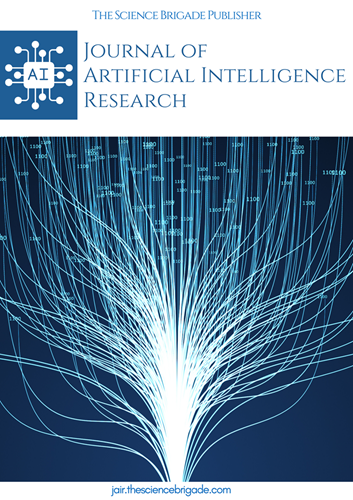Optimizing Mobile Platform Security with AI-Powered Real-Time Threat Intelligence: A Study on Leveraging Machine Learning for Enhancing Mobile Cybersecurity
Keywords:
mobile platform security, artificial intelligence, machine learning, real-time threat intelligenceAbstract
The increasing prevalence of mobile platforms in everyday life has made them a significant target for cybersecurity threats. As these threats become more sophisticated, traditional security measures are insufficient in providing real-time, dynamic protection. In response, artificial intelligence (AI) and machine learning (ML) have emerged as critical tools for enhancing mobile platform security through real-time threat intelligence. This paper explores the application of AI-powered threat intelligence systems in mobile cybersecurity, with a specific focus on the role of machine learning models in identifying, anticipating, and mitigating threats in real-time. By leveraging large datasets, ML algorithms can detect anomalous behavior, adapt to new attack patterns, and offer predictive insights that traditional security methods fail to deliver.
The study begins with an overview of the growing cybersecurity risks associated with mobile platforms, such as malware, phishing, data breaches, and network-based attacks. These vulnerabilities are exacerbated by the proliferation of mobile applications, bring-your-own-device (BYOD) policies, and the increasing interconnectivity of devices through the Internet of Things (IoT). In this context, mobile platforms face challenges such as fragmented ecosystems, limited computational resources, and diverse attack surfaces, making them particularly vulnerable to both known and unknown threats. The limitations of existing security frameworks highlight the need for a more proactive and intelligent approach to mobile security, which this paper argues can be achieved through AI and machine learning-driven threat intelligence.
References
D. M. O’Brien and A. N. Syed, “A Survey on Mobile Security and Cyber Threats,” IEEE Access, vol. 8, pp. 987-1005, 2020.
A. AlEroud and H. A. El-Khatib, “Mobile Malware Detection using Machine Learning: A Systematic Review,” IEEE Transactions on Information Forensics and Security, vol. 16, pp. 1653-1670, 2021.
S. S. Singh and M. G. S. M. Bhatia, “Deep Learning for Mobile Security: A Review,” IEEE Communications Surveys & Tutorials, vol. 23, no. 4, pp. 2365-2391, 2021.
C. P. G. F. de Lima and H. R. E. de Lima, “Enhancing Mobile Security through AI and Machine Learning: A Comprehensive Survey,” IEEE Transactions on Dependable and Secure Computing, vol. 19, no. 3, pp. 1544-1562, 2022.
Thuraka, Bharadwaj, et al. "Leveraging artificial intelligence and strategic management for success in inter/national projects in US and beyond." Journal of Engineering Research and Reports 26.8 (2024): 49-59.
Pal, Dheeraj Kumar Dukhiram, et al. "AIOps: Integrating AI and Machine Learning into IT Operations." Australian Journal of Machine Learning Research & Applications 4.1 (2024): 288-311.
El-Hassan, Amina. "Transparency in Medicare Broker Commissions: Implications for Consumer Costs and Enrollment Decisions." Journal of Machine Learning in Pharmaceutical Research 3.1 (2023): 219-237.
Kumar, Charan, and Eduardo Vargas. "Medicare Broker Commissions and Their Effect on Enrollment Stability: A Study on Churn Rates and Consumer Retention." Journal of Machine Learning in Pharmaceutical Research 3.1 (2023): 198-218.
Siddiqui, Ayesha, and Laila Boukhalfa. "Streamlining Healthcare Claims Processing Through Automation: Reducing Costs and Improving Administrative Workflows." Journal of AI-Assisted Scientific Discovery 3.1 (2023): 602-624.
Thota, Deepak, and Nina Popescu. "The Economic Ripple Effect of AI-Powered Claims Processing in Healthcare: Transforming Costs and Productivity." Australian Journal of Machine Learning Research & Applications 3.2 (2023): 516-536.
J. Singh, “Combining Machine Learning and RAG Models for Enhanced Data Retrieval: Applications in Search Engines, Enterprise Data Systems, and Recommendations ”, J. Computational Intel. & Robotics, vol. 3, no. 1, pp. 163–204, Mar. 2023
Tamanampudi, Venkata Mohit. "Deep Learning Models for Continuous Feedback Loops in DevOps: Enhancing Release Cycles with AI-Powered Insights and Analytics." Journal of Artificial Intelligence Research and Applications 2.1 (2022): 425-463.
Ahmad, Tanzeem, et al. "Explainable AI: Interpreting Deep Learning Models for Decision Support." Advances in Deep Learning Techniques 4.1 (2024): 80-108.
Kodete, Chandra Shikhi, et al. "Determining the efficacy of machine learning strategies in quelling cyber security threats: Evidence from selected literatures." Asian Journal of Research in Computer Science 17.8 (2024): 24-33.
Thota, Shashi, et al. "Few-Shot Learning in Computer Vision: Practical Applications and Techniques." Human-Computer Interaction Perspectives 3.1 (2023): 29-59.
M. S. Ali and H. E. Akçay, “AI-Powered Mobile Threat Intelligence Systems: A Review,” IEEE Security & Privacy, vol. 19, no. 5, pp. 65-75, 2021.
Downloads
Published
How to Cite
Issue
Section
License

This work is licensed under a Creative Commons Attribution-NonCommercial-ShareAlike 4.0 International License.
License Terms
Ownership and Licensing:
Authors of this research paper submitted to the journal owned and operated by The Science Brigade Group retain the copyright of their work while granting the journal certain rights. Authors maintain ownership of the copyright and have granted the journal a right of first publication. Simultaneously, authors agreed to license their research papers under the Creative Commons Attribution-NonCommercial-ShareAlike 4.0 International (CC BY-NC-SA 4.0) License.
License Permissions:
Under the CC BY-NC-SA 4.0 License, others are permitted to share and adapt the work, as long as proper attribution is given to the authors and acknowledgement is made of the initial publication in the Journal. This license allows for the broad dissemination and utilization of research papers.
Additional Distribution Arrangements:
Authors are free to enter into separate contractual arrangements for the non-exclusive distribution of the journal's published version of the work. This may include posting the work to institutional repositories, publishing it in journals or books, or other forms of dissemination. In such cases, authors are requested to acknowledge the initial publication of the work in this Journal.
Online Posting:
Authors are encouraged to share their work online, including in institutional repositories, disciplinary repositories, or on their personal websites. This permission applies both prior to and during the submission process to the Journal. Online sharing enhances the visibility and accessibility of the research papers.
Responsibility and Liability:
Authors are responsible for ensuring that their research papers do not infringe upon the copyright, privacy, or other rights of any third party. The Science Brigade Publishers disclaim any liability or responsibility for any copyright infringement or violation of third-party rights in the research papers.




